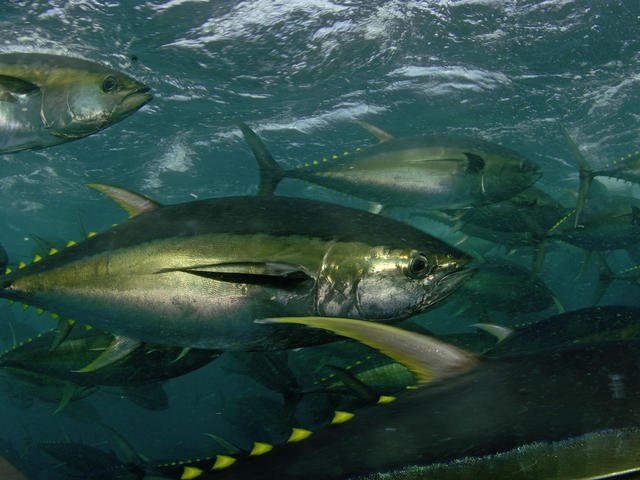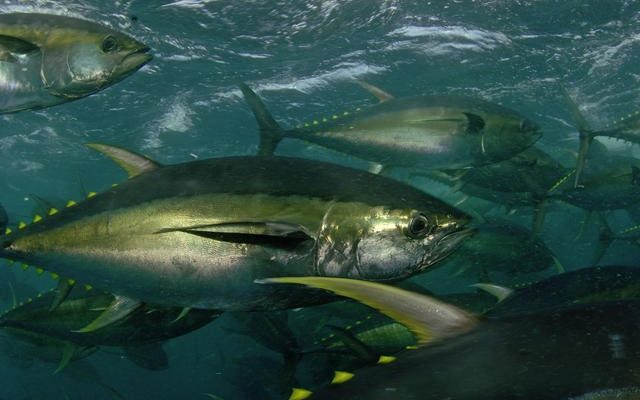
The situation isn’t just black and white. While yellowfin tunas are popular for fishing—think sushi and sashimi—they face several threats. Overfishing, climate change, and habitat destruction all play a role in their declining numbers. Let’s dive deeper and explore where yellowfin tunas stand today, what’s being done to protect them, and why this all matters.
Understanding the Status of Yellowfin Tuna
The global yellowfin tuna population isn’t as robust as it used to be, but they are not currently classified as endangered by the International Union for Conservation of Nature (IUCN). They fall under the ‘Near Threatened’ category. This means while they aren’t at the brink of extinction, their numbers are worriedly low, and they need careful management to prevent declining further.
Historically, yellowfin tunas have been a favorite target for commercial fisheries due to their size and taste. The overfishing problem is like a ticking clock. If we keep pulling these fish from the ocean at the current rate, their population could plummet, leading to serious ecological and economic consequences.
Understanding their situation is vital. Imagine a team relying on the star player. If that player gets injured or leaves, the entire team suffers. That’s analogous to what could happen to marine ecosystems if yellowfin tuna numbers keep dropping. If they disappear, the balance of ocean life could falter.
The Impact of Overfishing
One of the biggest threats to yellowfin tunas is overfishing. This happens when fish are caught faster than they can reproduce, which creates a significant imbalance. Picture a great party where everyone shows up but nobody brings food—the event turns chaotic, right? The ocean is similar; when too many fish are removed, it disrupts the entire marine community.
Several methods of fishing contribute to this issue, like longlining and purse seining. These methods can capture large quantities of fish at once, but they also catch non-target species, leading to further ecological harm. This bycatch can include everything from juvenile fish to endangered sea turtles.
Regulations are in place, but enforcement can be tricky. Poorly managed fisheries result in higher catches than sustainable levels. It’s like having rules for a game but not everyone following them. The question becomes, how do we encourage responsible fishing and keep our oceans healthy?
Climate Change: A Growing Concern
Another complicating factor for yellowfin tuna populations is climate change. Warmer oceans affect everything from fish migration patterns to their breeding cycles. It’s a bit like trying to grow your favorite flowers in a changing climate; if conditions aren’t right, they struggle to thrive.
As ocean temperatures rise, yellowfin tunas are adjusting their migratory paths to seek cooler waters. This shift can disrupt fishing practices and put additional stress on their populations as fishermen struggle to adapt. If you think about it, it’s like playing a game of hide and seek where the rules keep changing; it makes it tough for everyone involved.
Moreover, warming waters can lead to habitat degradation and reduced productivity of marine ecosystems. If the ocean’s health declines, so does the food supply for yellowfin tunas and other marine life, creating a cycle that is hard to break.
Conservation Efforts: What’s Being Done?
Despite the challenges, there’s good news regarding conservation efforts for yellowfin tunas. Around the globe, various organizations and governments are stepping up to create policies aimed at sustainable fishing.
For instance, the Western and Central Pacific Fisheries Commission (WCPFC) has put measures in place to manage how much yellowfin tuna can be caught annually. Think of this like setting a budget; it helps ensure we don’t spend more than we have. Smart regulations can help maintain a stable population and promote responsible practices among fishermen.
Additionally, many seafood sustainability programs have emerged, encouraging consumers to choose products that come from sustainable sources. When consumers demand sustainable seafood, businesses often respond positively. It’s like a ripple effect; the more people care, the more companies and fisheries will adapt to better practices.
There are also grassroots movements focused on ocean conservation, where local communities come together to protect their marine environments. Small actions can lead to significant changes.
How You Can Help
You might be wondering, “What can I do to help yellowfin tunas?” Here are a few simple steps that can make a big difference:
- Choose Sustainable Seafood: Look for labels indicating the fish was caught sustainably. This helps promote responsible fishing practices.
- Support Conservation Organizations: Donations or volunteering time can aid groups working to protect ocean habitats.
- Reduce Plastic Use: Plastics can end up in oceans, harming marine life. By reducing plastic waste, you’re already helping.
- Stay Informed: Follow news about marine conservation and share what you learn with others. An informed community is a powerful ally.
Just remember, every little action counts. When you choose to support sustainable practices, you’re contributing to a healthier ocean and a brighter future for yellowfin tunas.
The Economic Importance of Yellowfin Tuna
Yellowfin tunas aren’t just crucial for the ecosystem; they also play a significant role in the economy. They contribute billions of dollars to the fishing industry and support millions of jobs worldwide. Think about your favorite sushi place—those delicious dishes could vanish if yellowfin tunas become scarce.
Fisheries depend on sustainable stocks to maintain their livelihoods. If fish populations decline, it could lead to economic hardship for communities that rely on fishing. This creates a tough situation where we need to find a balance between economic needs and environmental sustainability.
You can liken this to a seesaw. If one side gets too heavy, the balance is lost. Finding ways to catch fish without endangering their populations is essential for ensuring that both the economy and marine health can thrive.
Ultimately, the question of whether yellowfin tunas are endangered isn’t merely a matter of biology; it’s a crucial issue about our planet’s health and our role in protecting it. The concerted efforts of conservationists, fishermen, and consumers can lead us toward a brighter future for these magnificent fish.
We all share a responsibility to engage with the world around us and ensure that our oceans remain vibrant and full of life. By making informed choices and advocating for sustainable practices, we can help protect yellowfin tunas and ensure future generations can experience the wonders of our oceans. Let’s make our actions count.

